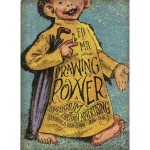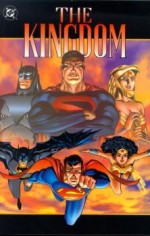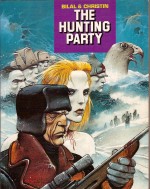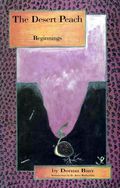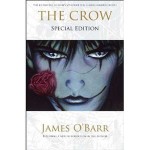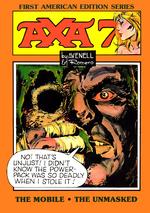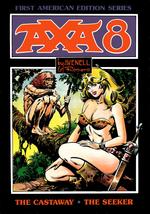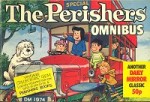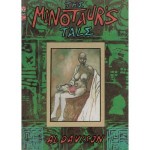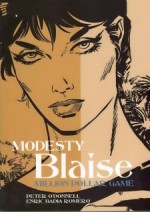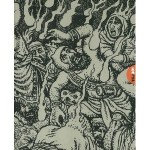
By various, Edited by Gary Groth & Kristy Valenti (Fantagraphics Books)
ISBN: 978-1-60699-291-3
After far too long a hiatus the new incarnation of The Comics Journal is available and as inspired as ever.
The Journal is the paramount English-language publication dedicated to the Art of graphic narrative, covering comics, cartooning and related fields domestic and global; interviewing creators, disseminating the facts and even advertising the best and most challenging product. They’ve done it competently, passionately and proudly for decades. You won’t always agree with the opinions expressed – editorial or from the many and various insiders and cognoscenti who have been featured – but you’d be an idiot to ignore or dismiss them if you care at all about the industry or the medium.
This latest offering, a truly monolithic square-bound book; 624 mostly monochrome pages but with lots of colour where necessary, devotes most of its mass to possibly the most important comics work of this new century whilst still finding ample room to examine one of its few rivals for primacy from the entire 20th century, an appreciation of a lost classic, an examination of the latest blockbuster from the founder and master of comics-reportage and much, much more.
In 2009 W. W. Norton and Co. released The Book of Genesis Illustrated by R. Crumb. The 200 page comics adaptation of the Robert Alter version of the old testament was the stunning result of four years of intense research, creative thought and non-stop drawing… and for most of us it’s a big contender for the artist’s absolute magnum opus.
R. Crumb: The Genesis Interview sees the always intriguing and painfully forthcoming master draughtsman talking to Gary Groth about every aspect of the project after which Roundtable: the Book of Genesis Illustrated by R. Crumb is thrown to a pack of critics and cognoscenti for analysis, rebuttal, refutation and literary transubstantiation. Rick Marschall contributes ‘Pilgrim’s Process’, Donald Phelps describes ‘An Epic Visualized’, Robert Stanley Martin declares ‘Crumb Finally Finds his Limits’, Jeet Heer dispassionately examines ‘Genesis Revisited’ and Tim Hodler follows the ‘Straight Lines’, whilst Alexander Theroux considers why and how ‘Crumb Goes to Church’ and Kenneth R. Smith caps off the initial set of theses with ‘A Book For Man Recounted in a Book By/For/Of Man’.
This is followed by an utterly absorbing Roundtable Responses feature in which the assembled contributors react to what each other propounded…
After that compelling 190-odd page lead section the first Sketchbook instalment delves into the mind and portfolio of Jim Woodring, in a compelling interview liberally spiced with the cartoonist’s working drawings, doodles and photos from Weathercraft and a host of other superbly eclectic classics
Al Jaffee & Michael Kupperman in Conversation is another magical dose of back and forth banter between an industry legend and rising star, moderated by Groth and liberally illustrated with work from both parties in case you’re unfamiliar with their oeuvre. In this case the stellar career and newest work of the Mad Magazine veteran and inventor of “Fold-ins†is counterbalanced with the surreal enticements of the unique talent behind Tales Designed to Thrizzle.
Warren Bernard (co-author of Drawing Power: A Compendium of Cartoon Advertising 1870-1940) outlines the career of one of the early industry’s greatest stars in John T. McCutcheon: A Cartoonist and His Dog before Sketchbook: Tim Hensley highlights the work of the relative newcomer behind the wonderful Ticket Stub.
Tim Kreider is the brilliantly acerbic and effective cartoonist/essayist/political gadfly behind Twilight of the Assholes and here he examines a series I’ve always loved but been too timid and lazy to review in Irredeemable: Dave Sim’s Cerebus.
Joe Sacco on Footnotes in Gaza is another illuminating interview by Groth, wherein indomitable champion of truth Sacco discusses his latest graphic novel, whilst Sketchbook: Stephen Dixon reveals the stunning an nigh-obsessive graphic facility of the prolific novelist and short-story writer behind Tisch, I, Time to Go, Meyer and so many others…
The ‘Reviews’ section further covers Sacco’s Footnotes in Gaza with a comprehensive dissertation from Kent Worcester, Ryan Holmberg dissects Yoshiro Tatsumi’s Gekiga manga masterwork Black Blizzard and Robert Stanley Martin delves into the collected wonderment of Eddie Cambell’s semi-autobiographical gem Alec: the Years Have Pants.
Marc Sobel’s ‘The Decade in Comics’ examines what might be the milestones of the last ten years – you decide – R. Fiore has “another Go-round with Racial Caricature†in the challenging ‘Affectionate, Sympathetic and Completely Racist’ and ‘Cartoonists Leading Cartoonists’ by Rob Clough reports on a unique industry mentoring program at the Center for Cartoon Studies.
In ‘Gus Arriola and the Comic Strip that Never Was – Until Now’ R. C. Harvey explores another strip which might have added to the late ‘Gordo‘ creator’s lustre: the adumbrated adventures of Persian delight Pussy Willow – a cat of means and many sharp ends…
‘Maggots and Time’ by Chris Lanier examines Brian Chippendale’s expressive and experimental Maggots comic in the context of art capturing motion and progression and a huge full colour comics section reprints Dell’s comicbook adaptation and licensed continuation of UPA’s cartoon classic ‘Gerald McBoing Boing’ – itself an animation of a superb Dr. Seuss tale – introduced here by animation legend Gene Deitch, after which the whole colossal chronicle circles back to point zero by revealing ‘Three Questions Answered about Robert Crumb’: a retrospective disquisition by Tom Crippin which closes this fabulous treasure trove of intellectual comics discourse.
Although it feels like it has always been part of our lives, TCJ only began business in 1976, interviewing creators, reporting on trends and events and generally assuming the critical role of critique-ing: a self-aware gadfly within and without our industry: celebrating the history and innovation of all aspects of cartooning and graphic narrative, keeping the balance between sales and artistic integrity firmly tipped on the side of the latter. It has for decades been the only place Americans hear of what the rest of the world of comics is doing.
This is a superb uber-magazine for comics lovers: it won’t ever tell you where and when to buy but it will certainly make you wonder why you do or don’t…
© 2011 Fantagraphics Books, Inc. All images/photos/text © their respective copyright holders. All rights reserved.

